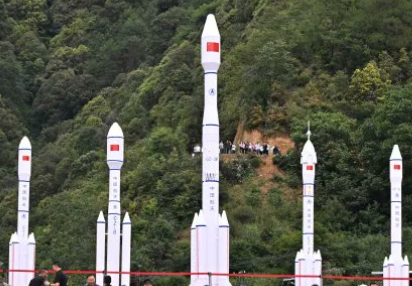France’s space agency is cooperating with China on a number of projects.
In a significant step forward for international space collaboration, China and France have successfully launched the Space-based multi-band astronomical Variable Objects Monitor (SVOM) into low-Earth orbit. The satellite was launched atop a Long March 2C rocket from Xichang Satellite Launch Centre in western China at 3pm Chinese time on a Saturday, as reported by state media.
Weighing 930 kg (2,050 pounds), SVOM is a product of nearly two decades of collaborative work between hundreds of scientists and engineers. The satellite will orbit Earth at an altitude of 625 km (450 miles) to precisely measure the location and energy of cosmic gamma-ray bursts, some of the universe’s most violent and energetic events. These bursts can result from phenomena such as the merging of black holes or the collapse of massive stars.
Beijing Time June 22, 2024 15:00: China-France SVOM satellite was launched by Long March 2C rocket from Xichang Satellite Launch Center. 118th space launch in 2024, China’s 29th, 2nd this month, 4th for Long March 2C. Full HD:https://t.co/I19yRBYlQu pic.twitter.com/FJFhTteQr8
— CNSA Watcher (@CNSAWatcher) June 22, 2024
The mission is a joint effort by the China National Space Administration (CNSA) and the French space agency CNES, which began their collaboration on this project in 2006. François Gonzalez, SVOM’s French project manager at CNES, reflected on the 18-year journey, emphasizing the strong team spirit fostered between the Chinese and French teams. He noted the learning process involved in adapting and pushing the mission forward through various challenges.
Gamma-ray bursts, the primary focus of SVOM, offer unique insights into significant cosmic phenomena but are notoriously difficult to detect due to their brief appearance in the sky and absorption by Earth’s atmosphere. This makes space-based observatories like SVOM crucial. The satellite is equipped with cutting-edge instruments, including the ECLAIRs telescope built in France, which can autonomously detect bursts in real-time across gamma and x-radiation energy ranges. Additionally, a Chinese-made visible telescope will track light emitted in the visible range after the initial burst.
France and China Collaborate on Satellite Launch to Explore the Universe:
A joint satellite mission between France and China has launched, aimed at detecting the most powerful explosions in the universe. #London#correct#Drake pic.twitter.com/2tVmsjrAnc— World update (@DataoftheWorld) June 22, 2024
Bertrand Cordier, the mission’s French principal investigator from the Saclay Nuclear Research Centre near Paris, emphasized the importance of coordinated observations between SVOM and large ground-based telescopes. These collaborations are essential for determining the origins of gamma-ray bursts and understanding the conditions under which they occur.
SVOM is expected to detect around 70 to 80 gamma-ray bursts annually, which will be meticulously analyzed to shed light on these mysterious cosmic events, hopefully turning them from enigmatic phenomena into valuable tools for cosmic exploration.
China, France launch satellite to better understand the universe https://t.co/w9NR7GpO0n
— Phys.org (@physorg_com) June 22, 2024
The launch of SVOM is just one of many collaborative endeavors in space between China and France, which began their partnership in 1997 with an agreement on the peaceful use of outer space. Their joint efforts have already yielded significant achievements, such as the China-France Oceanography Satellite launched in 2018, which has enhanced global ocean forecasting and severe weather warnings. Additionally, a French instrument was included in China’s Chang’e-6 mission to the moon, marking the first French scientific instrument to land on the lunar surface. Looking ahead, both countries are exploring further collaborative possibilities, including plans for another joint instrument on China’s upcoming Chang’e-8 mission slated for 2028. This ongoing partnership underscores the global nature of space exploration and the benefits of international cooperation in advancing our understanding of the universe.
Key Points:
i. China and France have successfully launched the Space-based multi-band astronomical Variable Objects Monitor (SVOM) into low-Earth orbit to study cosmic gamma-ray bursts, marking another milestone in their space collaboration.
ii. The SVOM satellite, launched atop a Long March 2C rocket from China’s Xichang Satellite Launch Centre, aims to precisely locate and analyze the energy of gamma-ray bursts, which are brief but extremely energetic cosmic events.
iii..The project, a collaboration between the China National Space Administration (CNSA) and the French space agency CNES, started in 2006 and took nearly two decades of development by hundreds of scientists and engineers.
iv. SVOM is equipped with advanced instruments, including the French-built ECLAIRs telescope for detecting gamma and x-radiation bursts and a Chinese-made visible light telescope for further observation post-burst.
v. The satellite is expected to detect 70 to 80 gamma-ray bursts annually, contributing to deeper understanding of these phenomena, and is part of a broader strategic partnership in space exploration between China and France, which includes other joint missions and scientific endeavors.
RM Tomi – Reprinted with permission of Whatfinger News



